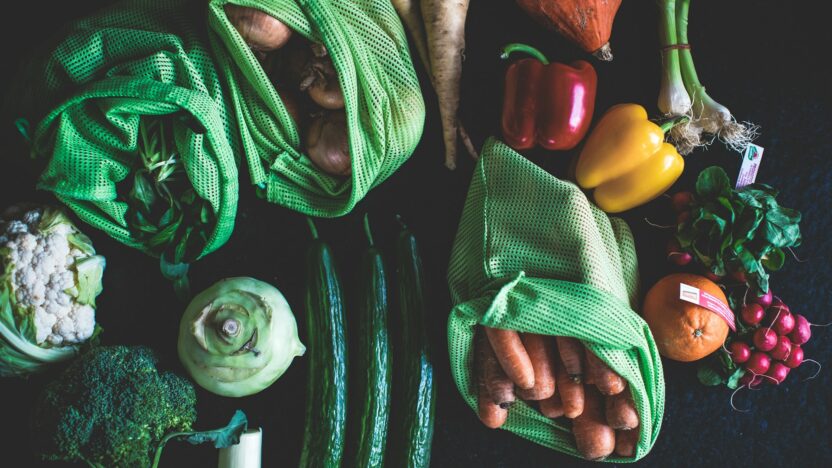Adopting a zero-waste lifestyle is a powerful way to help the planet while saving money and simplifying your life. Reducing waste doesn’t mean overhauling everything at once—small, consistent changes add up to a big impact. From cutting out single-use plastics to composting, this guide offers practical zero-waste tips you can easily fit into your daily routine. For more sustainable living ideas, visit For Organic Life.
Cutting Out Single-Use Plastics
Single-use plastics, like straws, bottles, and bags, contribute heavily to landfill waste and ocean pollution. Swapping them for reusable alternatives is an easy first step toward zero waste. Here are some ideas:
- Reusable Water Bottles: Carry a stainless steel or glass bottle instead of buying plastic ones. Brands like Hydro Flask keep drinks hot or cold for hours.
- Metal Straws: Replace plastic straws with stainless steel or bamboo ones. They come with cleaning brushes and are portable.
- Cloth Napkins: Use organic cotton or linen napkins instead of paper ones for meals at home or on the go.
- Beeswax Wraps: Wrap sandwiches or cover bowls with reusable beeswax wraps instead of plastic wrap.
Start by replacing one item at a time. For example, keep a reusable bottle in your bag to avoid buying drinks. Check local zero-waste stores for affordable options. These swaps reduce plastic waste and add a touch of style to your daily life.
Shopping with Reusable Bags and Containers
Grocery shopping is a prime opportunity to go zero waste. By bringing your own bags and containers, you can avoid plastic packaging and reduce waste. Here’s how to do it:
- Reusable Tote Bags: Carry sturdy cotton or canvas bags for groceries. Keep a few in your car or purse for unexpected trips.
- Produce Bags: Use lightweight mesh or cotton bags for fruits and vegetables instead of plastic produce bags.
- Bulk Containers: Bring glass jars or cloth bags to bulk stores for grains, nuts, or spices. Weigh containers first to subtract their weight at checkout.
- Say No to Receipts: Opt for digital receipts or skip them entirely to avoid thermal paper waste.
Before shopping, make a list to avoid impulse buys that might come in wasteful packaging. Visit farmers’ markets or co-ops that support package-free shopping. If stores don’t allow personal containers, ask for paper bags or skip packaging where possible. These habits make shopping greener and more intentional.
Composting Food Scraps at Home
Composting turns food scraps into nutrient-rich soil, keeping them out of landfills where they produce methane. Even if you live in an apartment, composting is doable. Here’s how to start:
- Choose a Compost Bin: Use a small countertop bin with a charcoal filter for odor control. Outdoor bins work for larger households or gardens.
- What to Compost: Include vegetable peels, coffee grounds, eggshells, and fruit scraps. Avoid meat, dairy, or oily foods, which attract pests.
- Set Up a System: Layer scraps with dry materials like leaves or shredded paper to balance moisture. Stir weekly to aerate.
- Use Your Compost: Add finished compost to houseplants, gardens, or donate it to community gardens.
If space is tight, try vermicomposting with a worm bin—it’s compact and efficient. Check local programs for compost drop-off sites if home composting isn’t an option. Composting reduces waste and creates a valuable resource for growing plants.
Choosing Products with Minimal Packaging
Packaging is a major source of household waste, but you can minimize it by choosing products thoughtfully. Here’s how:
- Buy in Bulk: Purchase staples like rice, pasta, or soap in bulk to reduce packaging. Use your own containers at bulk stores.
- Pick Package-Free: Choose loose produce or package-free bars like shampoo or soap at zero-waste shops.
- Opt for Recyclable Packaging: If packaging is unavoidable, select glass, metal, or paper over plastic, as they’re easier to recycle.
- Support Low-Waste Brands: Look for companies that use compostable or minimal packaging, like Who Gives a Crap for toilet paper.
Read labels to ensure products are sustainable beyond packaging—avoid greenwashing by checking certifications like Fair Trade or USDA Organic. Plan purchases to avoid excess, and repurpose packaging, like using glass jars for storage. Minimal packaging keeps your home clutter-free and the planet cleaner.
Creating a Zero-Waste Routine That Sticks
Building a zero-waste routine takes time, but small habits make it sustainable. Here’s how to make it part of your life:
- Start Small: Focus on one change, like using reusable bags, for a month before adding another.
- Set Up Systems: Keep reusables by your door or in your car for easy access. Organize a compost bin near your kitchen sink.
- Track Progress: Note how much waste you reduce, like fewer trash bags per week, to stay motivated.
- Learn from Others: Join zero-waste communities online or locally for tips and inspiration.
Be patient—zero waste isn’t about perfection but progress. If you slip up, like forgetting a reusable bag, try again next time. Celebrate small wins, like a full compost bin or a plastic-free grocery trip. For more tips, explore For Organic Life. A consistent routine turns zero waste into a natural part of your day.
Embracing a Waste-Free Life
Zero-waste living is about making mindful choices that benefit you and the planet. By cutting out single-use plastics, shopping with reusables, composting, choosing minimal packaging, and building a routine, you can reduce waste with ease. Start with one tip and watch your impact grow. Enjoy the journey to a simpler, greener life!




